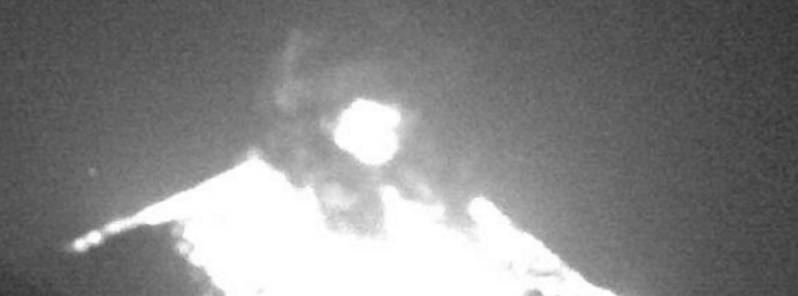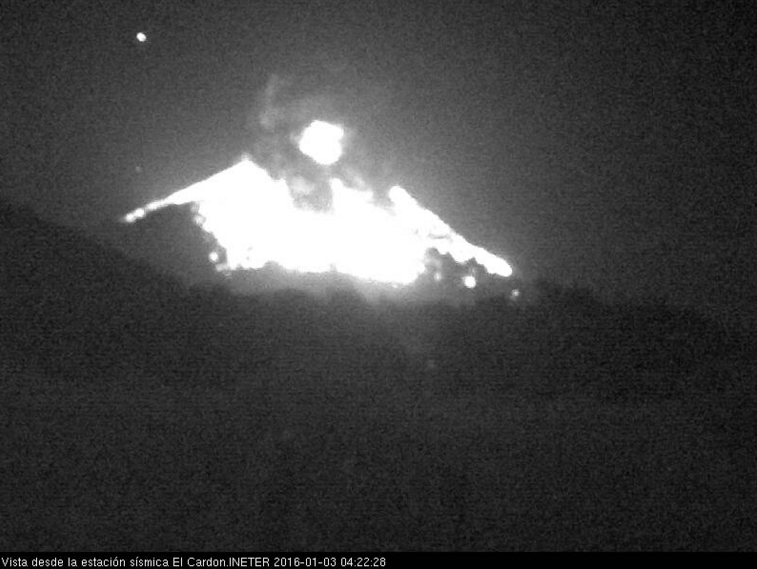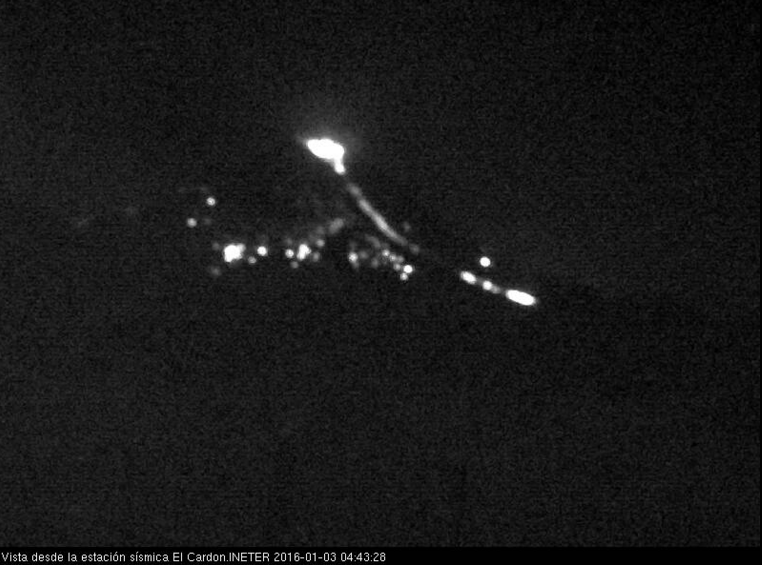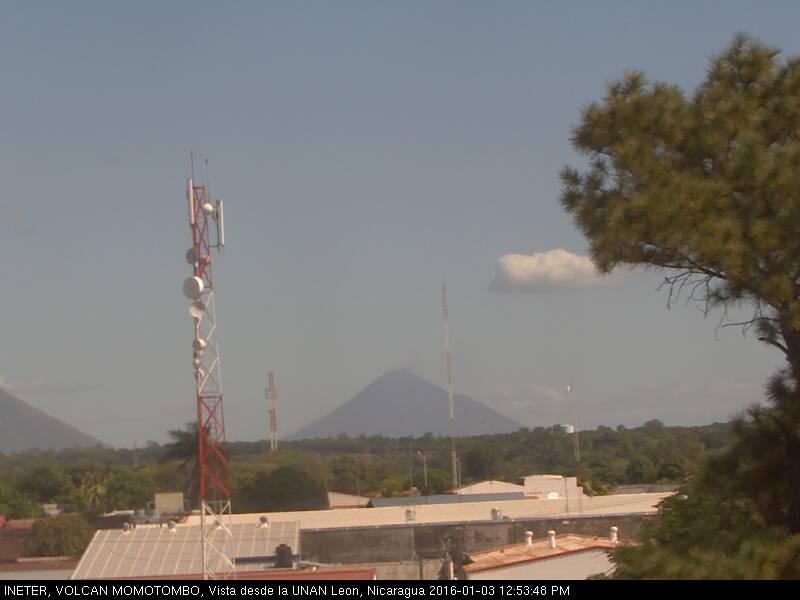Strong eruption burns vegetation on the flanks of Momotombo volcano, Nicaragua

A strong eruption of Nicaraguan Momotombo volcano was recorded at 04:22 local time on January 3, 2016 (22:22 UTC on January 2) and covered much of the summit cone with incandescent ejecta.
After 110 years of sleep, Momotombo volcano awakened on the morning of December 1, 2015. Four eruptions were recorded on the occasion sending steam and ash plumes up to 1 km (3 281 feet) above the volcano summit.

Momotombo eruption, January 3, 2016. Image credit: INETER

Momotombo volcano eruption, January 3, 2016. Image credit: INETER
The continuous strombolian activity accompanied with the lava flow effusion ceased during early December, and only high-temperature degassing, sporadic minor explosions and the growth of a possible small lava dome have been reported since. A strong eruption observed on January 3, 2016 (local time) has marked a more intense activity phase, Volcano Discovery reports.
On the morning of January 2, small ash emissions were observed. Weak explosions occurred later in the day. An intense explosion of January 3 might have involved a small pyroclastic flow reaching heights between 1.5 and 2 km (0.93 and 1.24 miles) on the northeast side of the volcano.
It remains unclear if the newest activity signalizes a new batch of magma is arriving at the vent and leading to even more intense period of activity, or is it caused by more superficial processes such as surface pressure released beneath the recently emplaced lava in the summit.

Momotombo volcano on the afternoon of January 3, 2016 (local time). Image credit: INETER
December 2015 is the first time the volcano showed the signs of eruptive activity since 1905, and only 16 eruptions have been recorded since 1524, most of which have been small explosions of phreatic nature. The only two larger eruptions were observed in 1605 and 1609 when large bombs and blocks were expelled to the distances of approximately 6 km (19 685 feet), in the area of the nowadays abandoned town of León Viejo.
The morning explosion caused no damage, however it was reported to ignite the vegetation on the flanks of Momotomba volcano.
Geological summary
Momotombo is a young, 1 297-m-high (4 255 feet) stratovolcano that rises prominently above the NW shore of Lake Managua, forming one of Nicaragua's most familiar landmarks. Momotombo began growing about 4500 years ago at the SE end of the Marrabios Range and consists of a somma from an older edifice that is surmounted by a symmetrical younger cone with a 150 x 250 m (492 x 820 feet) wide summit crater. Young lava flows from Momotombo have flowed down the NW flank into the 4-km-wide (2.5 miles) Monte Galán caldera.
The youthful cone of Momotombito forms a 391-m-high (1 282.8 feet) island offshore in Lake Managua. Momotombo has a long record of strombolian eruptions, punctuated by occasional larger explosive activity. The latest eruption, in 1905, produced a lava flow that traveled from the summit to the lower NE base. A small black plume was seen above the crater after an April 10, 1996 earthquake, but later observations noted no significant changes in the crater. A major geothermal field is located on the southern flank of the volcano.
Featured image: Momotombo volcano eruption, January 3, 2016. Image credit: INETER

Commenting rules and guidelines
We value the thoughts and opinions of our readers and welcome healthy discussions on our website. In order to maintain a respectful and positive community, we ask that all commenters follow these rules.